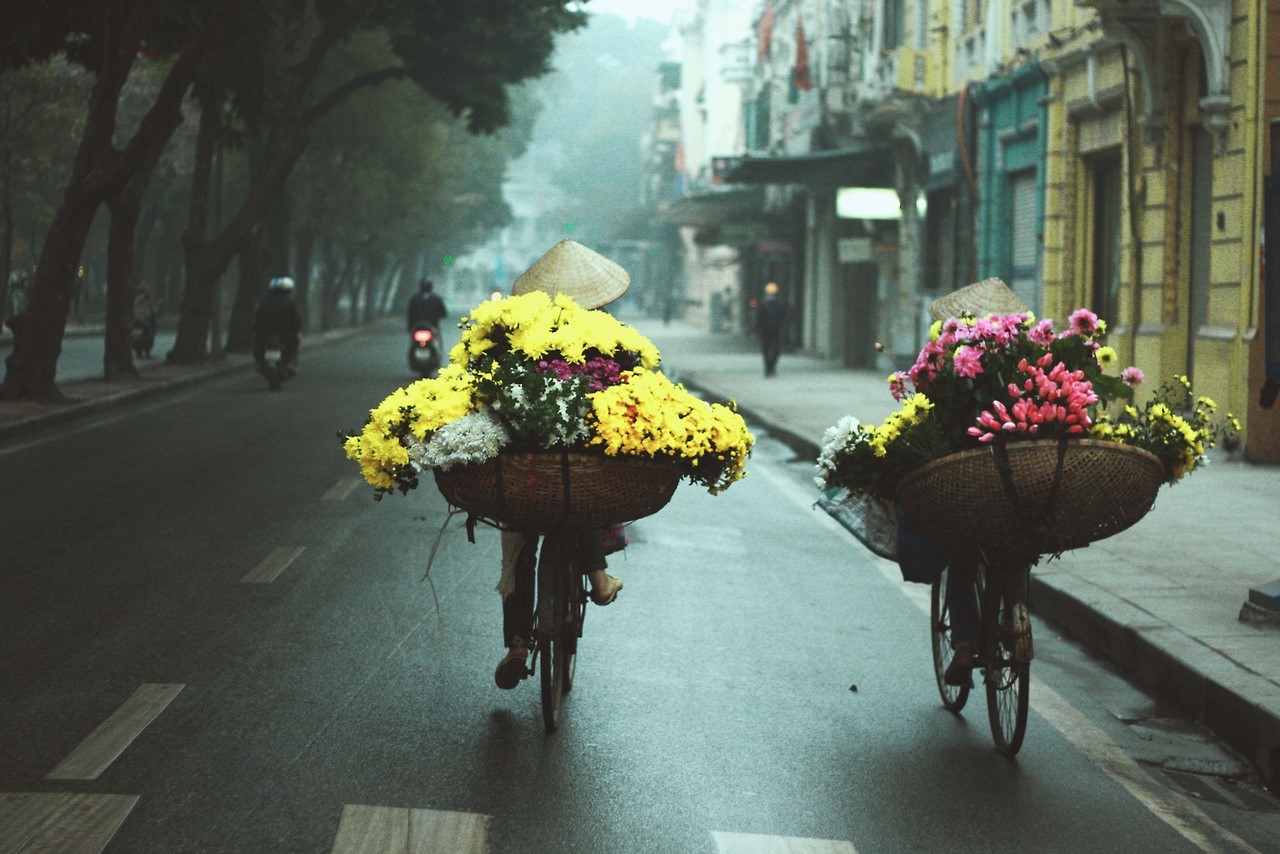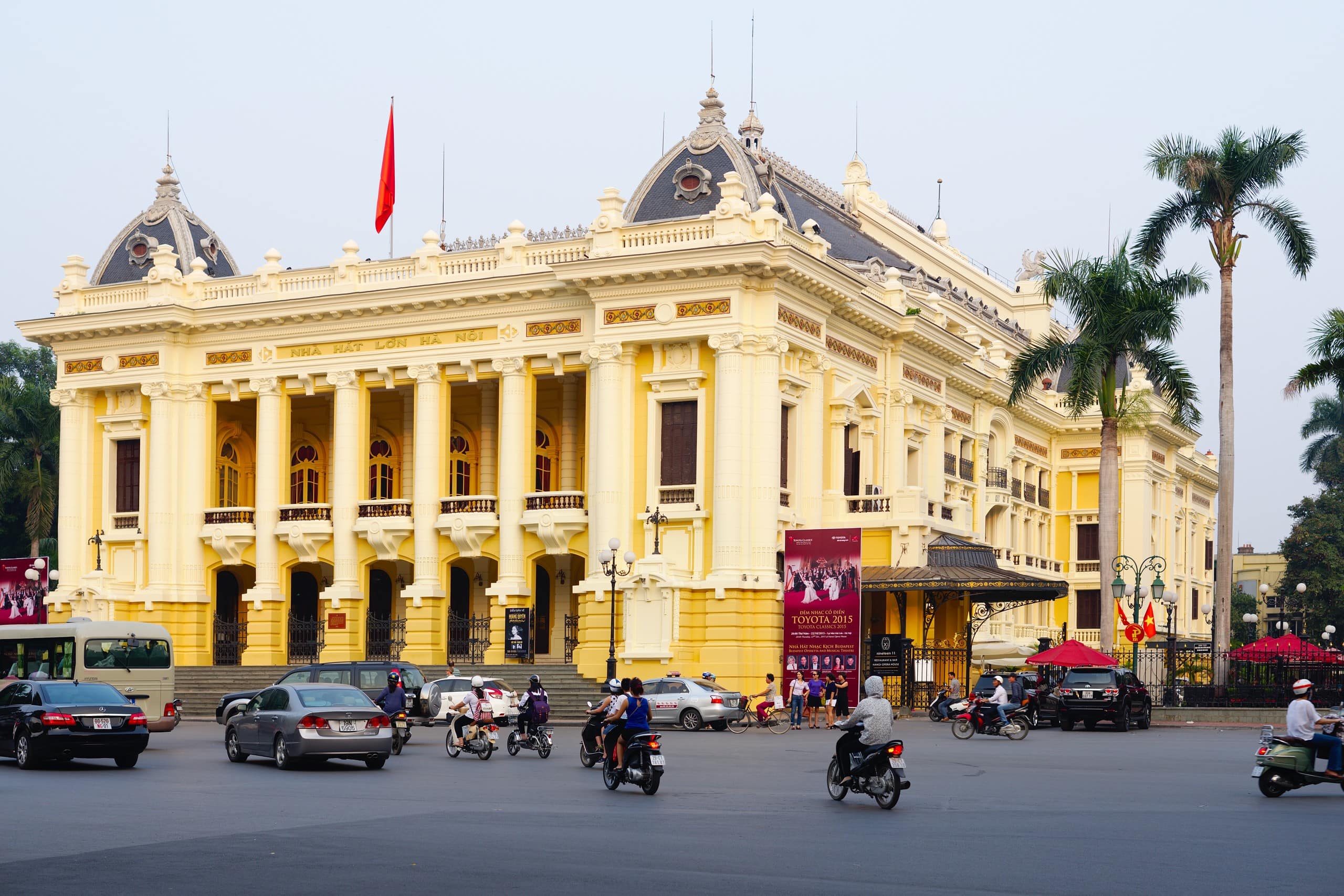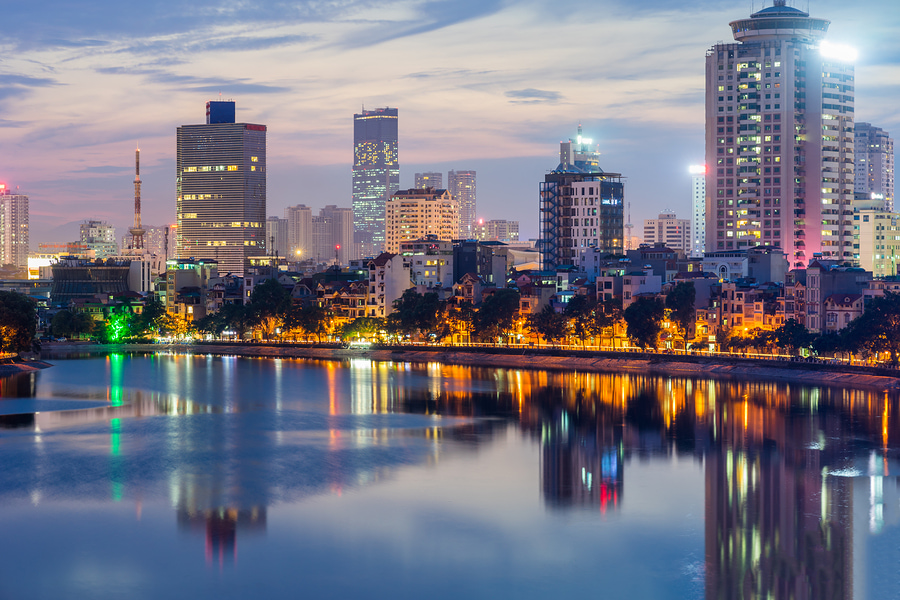Is Hanoi your first thought about Vietnam? Is it a worthy destination in your visit to Vietnam? … Hanoi is the place where people have discovered archaeological relics dating back about 20,000 years ago that have proved the long presence of ancient Vietnamese people here. The city has been destroyed many times and built through colonial times, French colonialism, Vietnam War, and so on. It has steadily become a majestic capital of Vietnam. It can be said that Hanoi is a miniature picture of Vietnamese history, which is constantly developing but still retains in itself the great values of Vietnamese culture, history and people.

Flower vendors in Hanoi (Photo: Internet)
LOCATION & HISTORY
Hanoi is the capital and also the second largest city of Vietnam in terms of population (about 8 million according to wikipedia). The capital now consists of 12 districts, 01 town and 17 suburban districts. Along with Ho Chi Minh City, these two cities are very important socio-economic centers of Vietnam.
Based on archaeological relics which show that people have appeared here for a long time. But until the ice melting period, the sea moved inland, the inhabitants of the Neolithic era were pushed back to the mountains. It was not until about 4 or 5 thousand years BC, people returned to live here.
History has shown that a part of Hanoi suburb was once the capital of Au Lac state (the Vietnamese state from 257 BCE to 179 BCE) founded by Thuc Phan An Duong Vuong (257 BCE – 207 BCE) with the famous Co Loa citadel which was located in present-day Hanoi’s Dong Anh district. In 1010, Ly Thai To (the founder of the Later Ly Dynasty) came to establish the capital and changed its name to Thang Long, this city was officially the capital of Vietnam, then.
HA NOI
The name Hanoi has been officially used since 1831 by the second Emperor of the Nguyen Dynasty, Minh Mang. Previously the city was named Thang Long (meaning the Dragon Flying), referring to the Emperor’s domicile. The capital of the country had moved to Phu Xuan (today’s Hue) so Emperor Minh Mang changed the name to avoid people’s confusion. The word “Hà” means “river”; “Nội” means “inside”. Because Hanoi is surrounded by 2 rivers: Red River and Day River. The city has since retained its name to this day although it has been the capital of the Indochinese Ferderation since 1902. With the French planning, Hanoi has brought a new look. The large bridges, train stations, schools, new roads, cinemas, etc. All made Hanoi look like a Western city. It also started a turbulent and transforming century in Vietnamese history.

The Opera House (Photo: Internet)
FAMOUS SIGHTSEEING PLACES IN HANOI
Hanoi has a tropical monsoon climate. From the end of August to the next March, the weather in Hanoi is cool and dry with an average temperature of about 20 degrees Celsius, this is also the peak season attracting the most tourists in Hanoi. However, from December to March, visitors can feel the distinct coldness of the Northern winter. The average temperature of winter is only about 16 degrees Celsius.
Some prominent sightseeing places of Hanoi:
– The Hanoi Old Quarter
– Thang Long Imperial Citadel
– Temple of Literature (the first university of Vietnam)
– One Pillar Pagoda (symbolizing the cradle of Buddhism and Taoism)
– Ngoc Son Temple
– Ba Dinh Square (where Uncle Ho read the declaration of independence)
– Hanoi Cathedral
– Opera House
– Museum of Ethnography
– Bat Trang pottery village, …
HANOI OLD QUARTER
Hanoi Old Quarter is the common name for a long-standing urban area of Hanoi located outside the Imperial Citadel of Thang Long. This urban area is populated with small-scale industry and trade. The most famous feature of the old quarter is the craft streets. Craftsmen from craft villages around Thang Long used to gather here, focusing on each area of their trade. The merchant boats could go to the middle of the street to trade, making the craft town more developed. And the traded products became the street names, with the word “Hang” in front of it, each specialized street dealing in one kind of item. For example: Hang Bong (cotton), Hang Bac (silver), Hang Dao (silk), etc.

Ta Hien street (Photo: Internet)
City of Lakes
Hanoi has a lot of lakes. The city, built on lowlands between rivers, is even sometimes known as the “city of lakes.” In the urban centre, there are 100 lakes dotting the city. There are natural and man-made lakes, each with its own unique history. They are more than just the soul of the City. They provide a scenic and tranquil respite from the crushing traffic and incessant bustle in other parts of the city.
These are the top 5 most famous lakes:
- Hoàn Kiếm Lake
- West Lake
- Truc Bach Lake
- Bay Mau Lake
- Thien Quang Lake

One of the beautiful lakeside streets (Photo: Internet)
There are many other interesting things about Hanoi that will make visitors more and more passionate. It is just like a good cup of tea. At first, it tastes a bit bitter and acrid but then leave sweetness and aroma. So in your opinion, is Hanoi a worthy destination for your visit to Vietnam?
Check out our Hanoi tours for more details!
(Justin Ngoc Pham)


